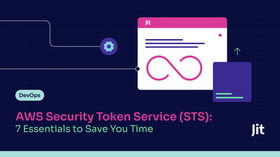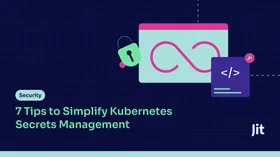Announcing Jit's New Partnership with Loom Security: Bringing Cloud-Native Security into Focus
Published November 5, 2024.

Securing applications is more challenging than ever. Companies are faced with increasingly complex infrastructures that demand higher levels of protection to mitigate security risks effectively. That’s why Jit is thrilled to announce our new partnership with Loom Security, a leading professional services firm dedicated to helping companies secure their applications in the cloud.
Introducing the Partnership
Loom Security has built its reputation on guiding organizations through the complexities of securing cloud-native environments. From strategic assessments to operational best practices, Loom Security delivers expertise across a wide array of cloud security tooling and processes – including, but not limited to implementing zero-trust policies, identity management, network security, and application security.
To enhance their services further, Loom Security is introducing Jit’s Application Security Posture Management (ASPM) capabilities to their customers. Jit’s ASPM platform is a purpose-built solution designed to proactively address vulnerabilities and streamline security management for developers. By incorporating Jit into their security framework, Loom Security is enhancing their comprehensive cloud security offering to drive security automation, governance, and efficiency.
How Jit and Loom Security Work Together
Loom Security follows a structured approach in helping their customers secure their cloud-native applications, grounded in three components: Plan, Build, and Run. Here’s how Jit fits into each of these pillars to strengthen your application and cloud security posture.
1. Plan: Aligning Security Strategy with Jit’s Security Plans
In the Plan phase, Loom Security collaborates with their customers to establish a security strategy tailored to their technical environment and business objectives. This involves setting clear security outcomes and aligning all stakeholders around a shared goal. Jit’s Security Plans play a crucial role here by offering predefined, yet customizable, blueprints that help organizations manage toward their security objectives.
Examples include the SOC2 Plan, which aligns product security tooling to specific SOC2 line items, or the Minimal Viable Security Plan, which covers the core product security bases for startups with minimal effort.
With Jit, organizations can create targeted Security Plans that lay out the required controls and workflows needed to achieve the stated objective (such as achieving compliance requirements or reducing their Jit Risk score by X%). By implementing Jit’s Security Plans, Loom Security helps their customers set a proactive course for aligning many different teams around a common goal.
2. Build: Implementing Governance and Guardrails for Developers
Once the Security Plan is set, it’s time to Build. During this phase, Loom Security works to implement the established strategy using security controls and governance. Jit makes this process seamless by activating Security Plans, which standardizes product security tooling, triage process, and reporting across the organization. Customers simply integrate with their Source Code Manager and cloud provider to enable one-click activation for Security Plans.
Scanner activation automatically analyzes all selected code repositories and cloud resources for existing product security issues. These issues are prioritized according to runtime and business context factors – like whether they’re exposed to the internet or call a sensitive database. This enables security teams to focus on the real risks, while filtering out the noise.
Scanner activation also implements non-intrusive guardrails that guide developers towards secure coding practices. Learn more about Jit’s continuous scanning in the “Run” phase below.
3. Run: Continuous Security Monitoring and Developer-First UX
The Run phase focuses on ongoing monitoring and improvement. Loom Security emphasizes the importance of continuously assessing and optimizing the security posture of applications in production.
Jit provides continuous scanning for every code change, enabling organizations to resolve vulnerabilities early in the development cycle. It's exceptionally easy for developers to use. Without leaving their environment – whether it be their IDE, GitHub, or GitLab – Jit delivers actionable remediation guidance for security issues and auto remediation that helps developers consistently and independently resolve security issues.
This reduces risk at the source by enabling developers to secure their code before deploying it to production. By automating the implementation of security standards, Jit empowers developers to build secure code without slowing down innovation. Learn how Jit makes it easier and faster for developers to consistently resolve code security issues before production:
So What? The Benefits of Partnering with Loom Security and Jit
The combination of Loom Security’s cloud-native expertise and Jit’s ASPM capabilities provides customers with a comprehensive solution to secure their cloud applications. Loom Security brings strategic clarity and a structured framework, while Jit enhances this framework with security automation, governance, and proactive vulnerability management.
By working with Loom Security and Jit, organizations gain the ability to secure their cloud environments effectively and efficiently. Customers can align their product security strategy, implement it seamlessly, and continuously monitor their posture—all without disrupting developer workflows.
This partnership empowers teams to shift left on security, ensuring robust protection and compliance at every step of the cloud application lifecycle.





